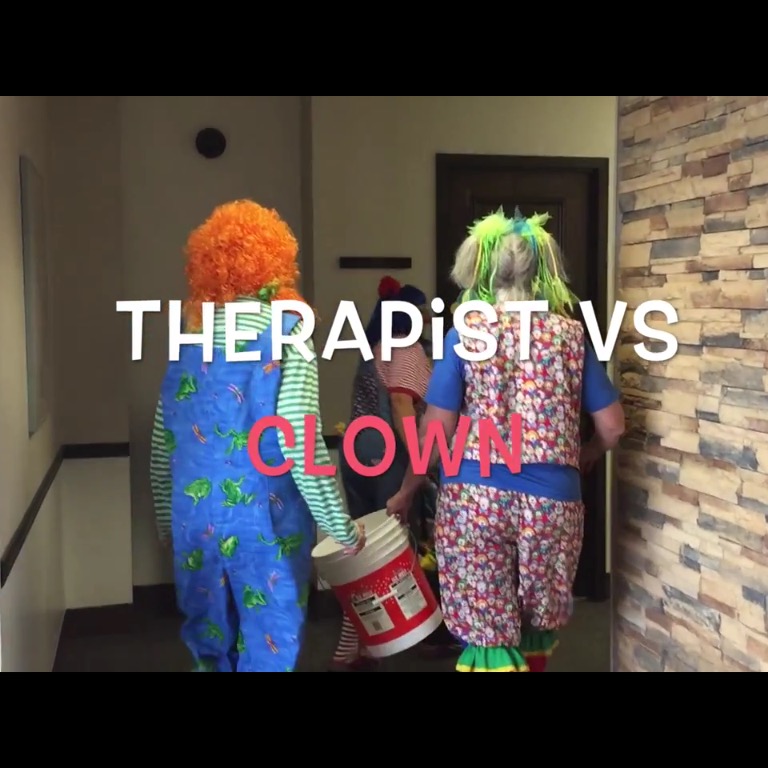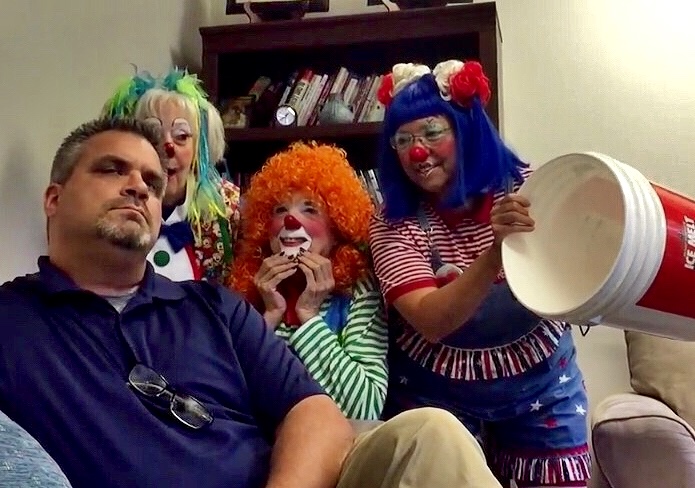-
Therapist vs. Clowns Videos
Agape Christian Counseling Service’s therapist, Brian Meisenheimer, steps outside his comfort zone to face his own personal fear of clowns. After suffering from a very real phobia of clowns and masks for many years, Brian learned coping skills through several therapy sessions with another of Agape’s therapists. Be sure to watch the Behind the Scenes video as well to learn how Brian overcame his coulrophobia (fear of clowns). Special thanks to Agape’s dear new friends, professional clowns: Ruth Baker “Sparkle”, Rita Stull “Charity”, & Syd Vogt “Fussie Gussie”! No clowns were harmed in the making of this video. If you have any clowning needs in your future, please see the…
-
Coming soon: Therapist vs. Clowns video!
Brian Meisenheimer takes on his fear of clowns! See how this therapists steps out of his comfort zone to face his own personal challenge… coulrophobia (fear of clowns). Coming THIS Thursday to a YouTube viewer near you! Special thanks to Agape’s dear new friends, professional clowns: Ruth Baker “Sparkles”, Rita Stull “Charity”, & Syd Vogt “Fussy Gussy”! Update: (click here to see the clown videos)
-
Fear of Elevators
A very special thanks to one of Agape’s board members, Mike Brauch, for donating furniture for our offices from the Emmaus House auction! We are continually blessed by people with a heart to serve and by God’s provision… While we were transporting some of the furniture out of Emmaus House, some of our counselors were reminded of another very common phobia… Elevators! You can see the very old elevator we encountered in these pictures.
-
Facing Fears and Phobias in Therapy
By Darrell Provinse, MA, LPC, NCC Because we, at ACCS, use a multi-factorial approach to counseling, we use an integrative model in dealing with anxieties, phobias, and PTSD. This includes traditional cognitive interventions, as well as gradual exposure and systematic desensitization, coupled with advanced relaxation techniques, and, as the situation merits, eye movement desensitization and reprocessing, neuro-linguistic programming, and cognitive process therapy. This allows the therapist to address the biology of fear, as well as the thought process, the neurological process, and the behavioral process, which together produce better traction and long-term results.




